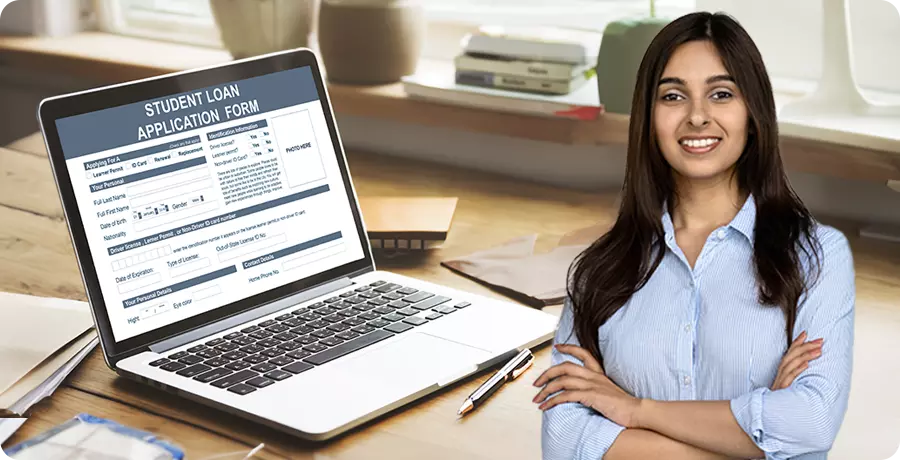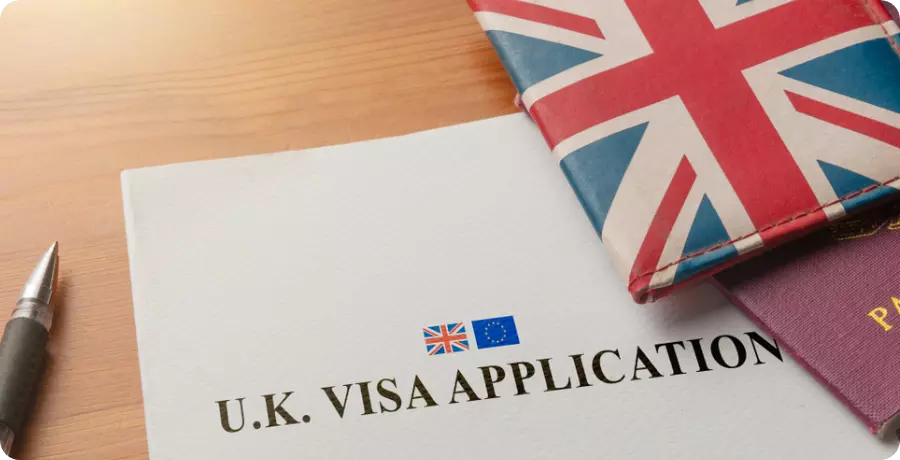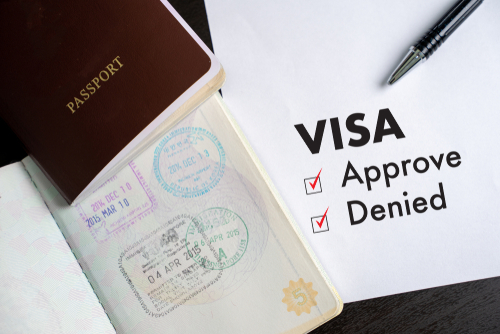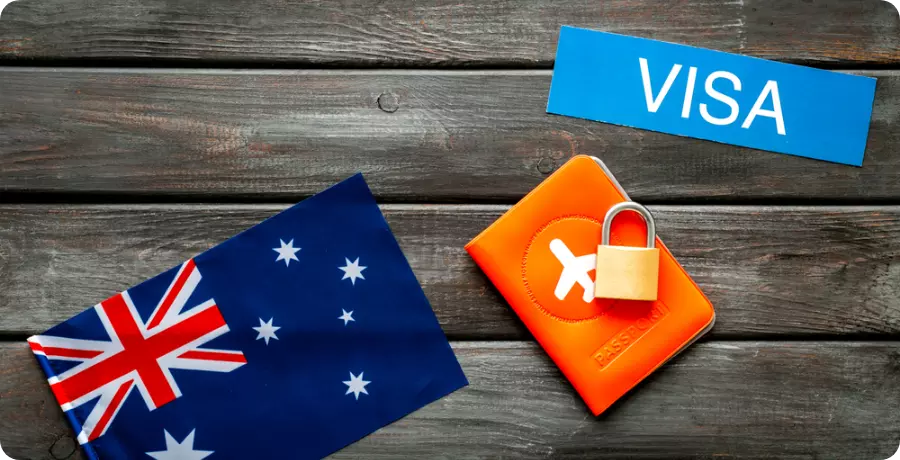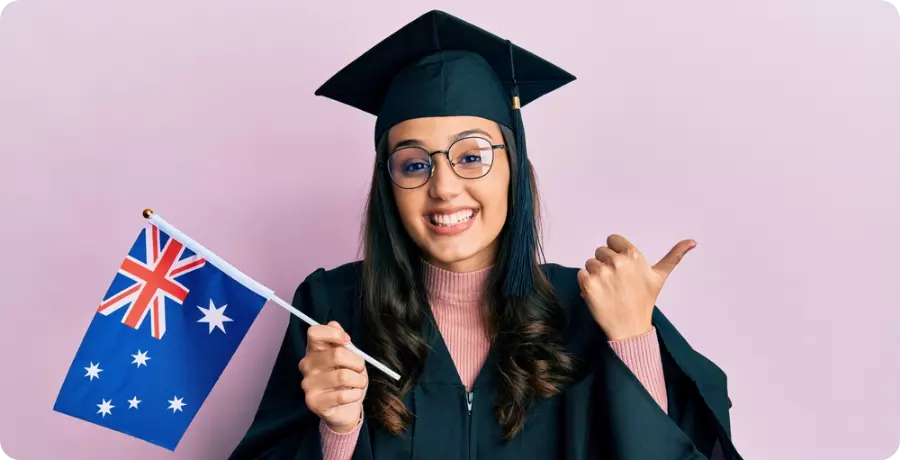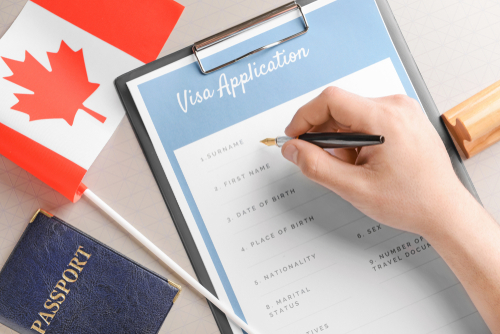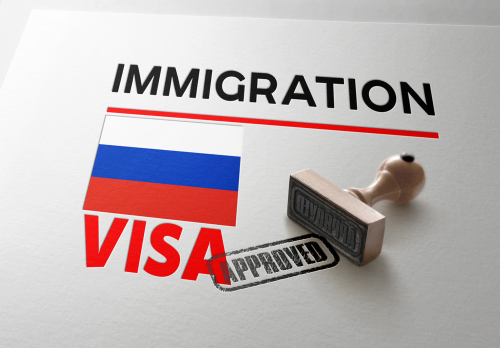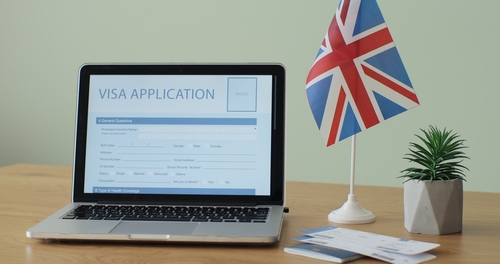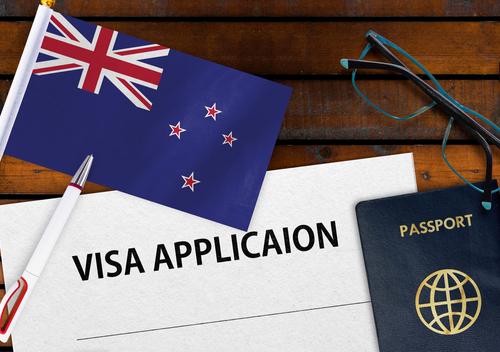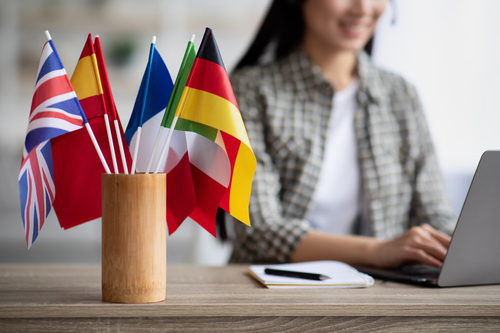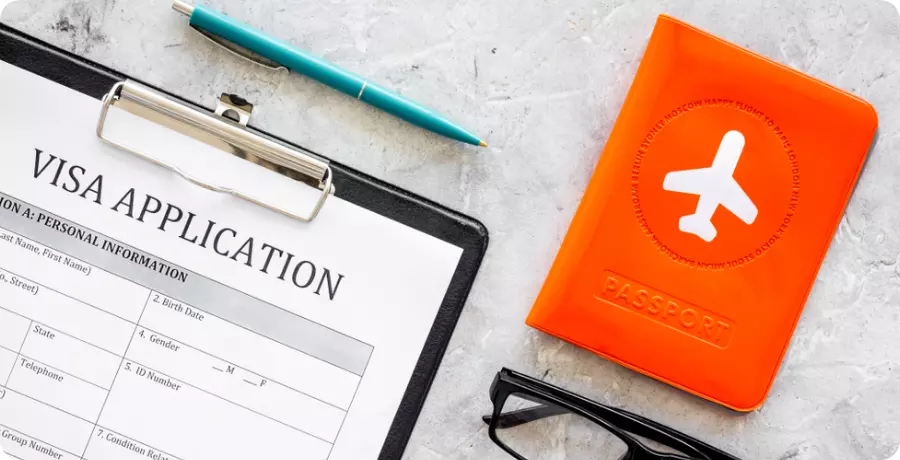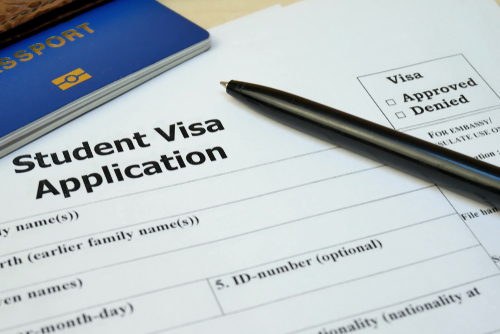
Types of USA Student Visas
There are three types of USA student visas. Indian students primarily apply for the F1 Visa, which is designated for academic studies at accredited universities in the USA. The J1 and M1 visas are less common and cater to exchange visitors and vocational students, respectively. Let's have a look at each type of USA student visa in depth.
| S.No | Type of Student Visa | Description |
| 1 | F-1 Student Visa | For students engaged in full-time academic studies at accredited U.S. institutions. |
| 2 | J-1 Exchange Visa | For individuals participating in cultural exchange programs, including academic studies. |
| 3 | M-1 Student Visa | For students in vocational or non-academic training programs at U.S. institutions. |
Documents required for US student Visa
Obtaining a student visa to study in the United States requires thorough preparation and submission of various documents. The completeness and accuracy of these documents play a critical role in the success of your visa application. Here's an in-depth look at the documents needed for a U.S. student visa application,
- Valid Passport: The passport must be valid for at least six months beyond your period of stay in the U.S. Recent statistics indicate that passport issues are a common reason for application delays, so ensure your passport is up to date well in advance.
- Nonimmigrant Visa Application: Form DS-160Must be completed and submitted online before your interview.The form requires detailed information about your background, purpose of visit, and plans in the U.S.
- Application Fee Payment Receipt: A receipt proving payment of the nonrefundable visa application fee, typically $160 for student visas (F, M, and J types).
- Photograph: You will need to upload a digital photograph while completing the online Form DS-160. The photo must meet specific format requirements set by the U.S. Department of State.
- Certificate of Eligibility for Nonimmigrant (F-1) Student Status, Form I-20: Issued by your U.S. school, college, or university which must be approved by the Student and Exchange Visitor Program (SEVP). Statistics from SEVP in 2020 noted that over 1 million I-20 forms were issued to prospective students, underscoring the scale of student migration to the U.S.
F1 Visa (Academic Student Visa)
The F1 USA student visa is intended for students attending a full-time degree or academic program at a U.S. college, university, high school, private elementary school, seminary, conservatory, or another academic institution, including language training programs. The below steps outline the process of F1 visa requirements for India. As the most common type of student visa, the F1 visa facilitates the entry of a large number of international students into the U.S. every year, supporting their pursuit of academic excellence and cultural exchange.
F1 Visa requirements
The fields of STEM (Science, Technology, Engineering, and Mathematics) are the most popular among F1 visa students, with nearly 50% enrolled in these disciplines. India and China are the leading countries of origin for F1 visa students, representing about 50% of all international students in the U.S.
To qualify for an F1 visa, a student must:
- Be enrolled in a full-time academic program at an institution accredited by the U.S. government. This program must be accomplished with a degree, diploma, or certificate.
- Attend a school approved by the Student and Exchange Visitor Program (SEVP), which requires registration on the Student and Exchange Visitor Information System (SEVIS).
- Show sufficient financial support to cover tuition and living expenses for the duration of their stay in the U.S. without the need for unauthorized employment.
- Prove strong ties to their home country, including a residence abroad they do not intend to abandon and intentions to return home after the completion of studies.
How to apply for an F1 student Visa?
The application process for an F1 visa includes several key steps:
- Obtain an I-20 Form: After being accepted by a SEVP-certified institution, students will receive a Form I-20. This form is critical as it is required to apply for a visa, enter the U.S., and maintain legal status while in the country.
- Pay the SEVIS Fee: Before applying for the F1 visa at a U.S. embassy or consulate, students must pay the SEVIS I-901 fee to be registered in SEVIS.
- Complete the Online Visa Application (Form DS-160): Applicants must fill out the DS-160 form accurately and submit it online, followed by scheduling a visa interview.
- Attend the Visa Interview: The visa interview is a crucial part of the process where consular officers evaluate the student's intentions, academic potential, and financial capability to ensure eligibility for the F1 visa.
| Steps | Description |
| Secure Admission | Obtain acceptance from a SEVP-certified U.S. educational institution and receive Form I-20. |
| Pay SEVIS Fee | After receiving Form I-20, pay the SEVIS I-901 fee to register in the Student and Exchange Visitor Information System. |
| Visa Application and Interview | Complete the DS-160 form online, schedule and attend a visa interview at a U.S. Embassy or Consulate. |
US student visa fee - Visa cost for the USA from India
Indian students who wish to study in the USA should be aware of visa costs for the USA from India. These USA student visa costs are part of the broader financial considerations that students must plan for when preparing to study abroad. Here’s an in-depth look at the fees involved in the process of obtaining a U.S. student visa from India.
Overview of Visa Types and Associated Costs
As mentioned earlier, Indian students typically apply for one of three types of visas depending on their educational plans:
- F1 Visa: For academic studies at accredited U.S. institutions.
- J1 Visa: For participants in exchange programs that promote cultural exchange.
- M1 Visa: For non-academic or vocational studies.
Each of these visa types has associated costs that are generally consistent across all U.S. consulates and embassies worldwide, including those in India.
Breakdown of USA Study Visa Fees
1. SEVIS Fee:
- F1 and M1 Visa: The SEVIS (Student and Exchange Visitor Information System) I-901 fee is $350, approximately ₹29,400.
- J1 Visa: The SEVIS fee for J1 visa applicants is $220, approximately ₹18,480.
2. Visa Application Fee (MRV Fee):
- The Machine Readable Visa (MRV) fee for all student visa categories (F, J, M) is $160, approximately ₹13,440.
3. Additional Costs
- Travel Costs: Costs incurred traveling to the nearest U.S. Embassy or Consulate.
- Documentation Costs: Expenses related to obtaining required documents such as passport photos and photocopies.
- Health Insurance: J1 visa applicants need health insurance that meets U.S. government requirements.
Total estimated USA study visa cost
The total cost to apply for a U.S. student visa from India, excluding potential travel expenses and other variable costs like documentation and health insurance, generally ranges from approximately ₹29,400 to ₹42,840. This estimate includes the SEVIS fee and the visa application fee.
Here’s a simplified breakdown of the visa costs:
| Description | Approx cost in USD | Cost in INR |
| SEVIS Fee (F1, M1) | $350 | ₹29,400 |
| SEVIS Fee (J1) | $220 | ₹18,480 |
| Visa Application Fee | $160 | ₹13,440 |
| Total for F1/M1 Visa | $510 | ₹42,840 |
| Total for J1 Visa | $380 | ₹31,920 |
What is a J1 Visa?
The J1 visa is a non-immigrant visa primarily used for cultural and educational exchange programs in the United States. This visa category encompasses a wide range of participants, including students, research scholars, professors, and exchange visitors participating in programs that promote cultural exchange, especially to obtain medical or business training within the U.S.
Eligibility Requirements for J1 US Study Visa
Participants must be accepted into an exchange program that is recognized and certified by the U.S. Department of State. These programs are designed to promote the interchange of persons, knowledge, and skills in the fields of education, arts, and sciences. Over 300,000 participants come to the U.S. each year under J1 visa programs, according to the U.S. Department of State. Germany, Brazil, and China are the major contributors to USA study visas.
J1 student visa application process
- Program Sponsor Approval: Obtain a DS-2019 Form from a designated program sponsor, which proves acceptance into an exchange program.
- Pay the SEVIS Fee: Participants must pay the SEVIS I-901 fee to be registered in the Student and Exchange Visitor Information System.
- Complete the Visa Application (DS-160): Fill out and submit the DS-160 form online, then schedule a visa interview.
- Attend the Visa Interview: Attend the scheduled interview with all required documentation, including the DS-2019 Form, passport, and proof of financial support.
What is an M1 Visa?
The M1 visa is a type of student visa reserved for vocational and technical schools. While similar to the more familiar F1 visa, the M1 visa is designated for students engaging in non-academic or vocational study.
Eligibility Requirements of M1 Student Visa
Applicants must be enrolled in a vocational program at a postsecondary institution recognized by the U.S. government. Like the F1 visa, M1 students must demonstrate financial stability and intent to return to their home country upon completion of studies.
Application Process M1 - USA student Visa
- Obtain Form I-20: Receive a Form I-20 from a vocational institution approved by the SEVP.
- Pay the SEVIS Fee: Similar to other student visas, the SEVIS I-901 fee must be paid before application.
- Complete the DS-160 Form: Submit the online visa application and arrange for a visa interview.
- Attend the Visa Interview: Provide proof of your vocational program enrollment and financial sustainability.
English language requirements for US student visa
The U.S. Department of State mandates that all F-1 and M-1 visa applicants must provide evidence of English language proficiency. This is typically achieved through standardized tests such as the Test of English as a Foreign Language (TOEFL) or the International English Language Testing System (IELTS).
-
TOEFL: A minimum score of 50 out of 120 is generally required.
-
IELTS: A minimum overall band score of 6.0 out of 9.0 is typically needed.
USA study visa Processing Time in India
The processing time for a U.S. student visa from India varies based on several factors, including the type of visa, the time of year, and the specific U.S. Embassy or Consulate's workload. Generally, applicants can expect the following:
-
F-1 Visa: Typically processed within 3 to 5 weeks.
-
J-1 and M-1 Visas: Processing times may be slightly longer, averaging 2 to 3 months, depending on individual circumstances.
Top 5 FAQs on USA Student Visa
1. Can I travel outside the US while on a student visa?
Yes, as an F-1 student visa holder, you can travel outside the United States during your studies. However, to re-enter the U.S., you must present a valid passport, a valid F-1 visa, and a properly endorsed Form I-20. It's advisable to consult with your Designated School Official (DSO) before traveling to ensure all documentation is in order.
2. Can I work on a student visa for the US?
F-1 visa holders have specific work opportunities:
-
On-Campus Employment: Permitted up to 20 hours per week during academic sessions and full-time during holidays and breaks.
-
Curricular Practical Training (CPT): Allows work in a field related to your study, typically during your academic program.
-
Optional Practical Training (OPT): Permits up to 12 months of work in your field of study after completing your degree, with a possible 24-month extension for STEM graduates.
All employment requires prior authorization from your DSO and, in some cases, the U.S. Citizenship and Immigration Services (USCIS).
3. How much does a US student visa cost?
The costs associated with obtaining a U.S. student visa include:
-
SEVIS Fee: $350 for F-1 and M-1 visas.
-
Visa Application Fee: $160 for F, J, and M visas.
These fees are subject to change, so it's essential to verify the current amounts before applying.
4. Is IELTS required for a USA student visa?
While the U.S. government does not mandate English proficiency tests for visa issuance, individual institutions may require them for admission purposes. Tests like IELTS or TOEFL are commonly used to demonstrate English proficiency. It's advisable to check the specific requirements of your chosen institution.
5. How much bank balance is required for a US Student Visa?
There is no fixed minimum bank balance required for a U.S. student visa. However, you must demonstrate sufficient funds to cover tuition and living expenses for at least the first year of study. Many institutions and embassies recommend having funds equivalent to the estimated costs listed on your I-20 form. For example, some sources suggest having at least ₹8,33,510 or 1.5 times your I-20 expenses.
